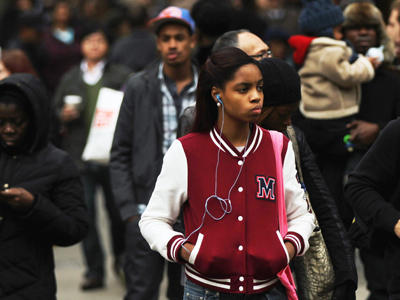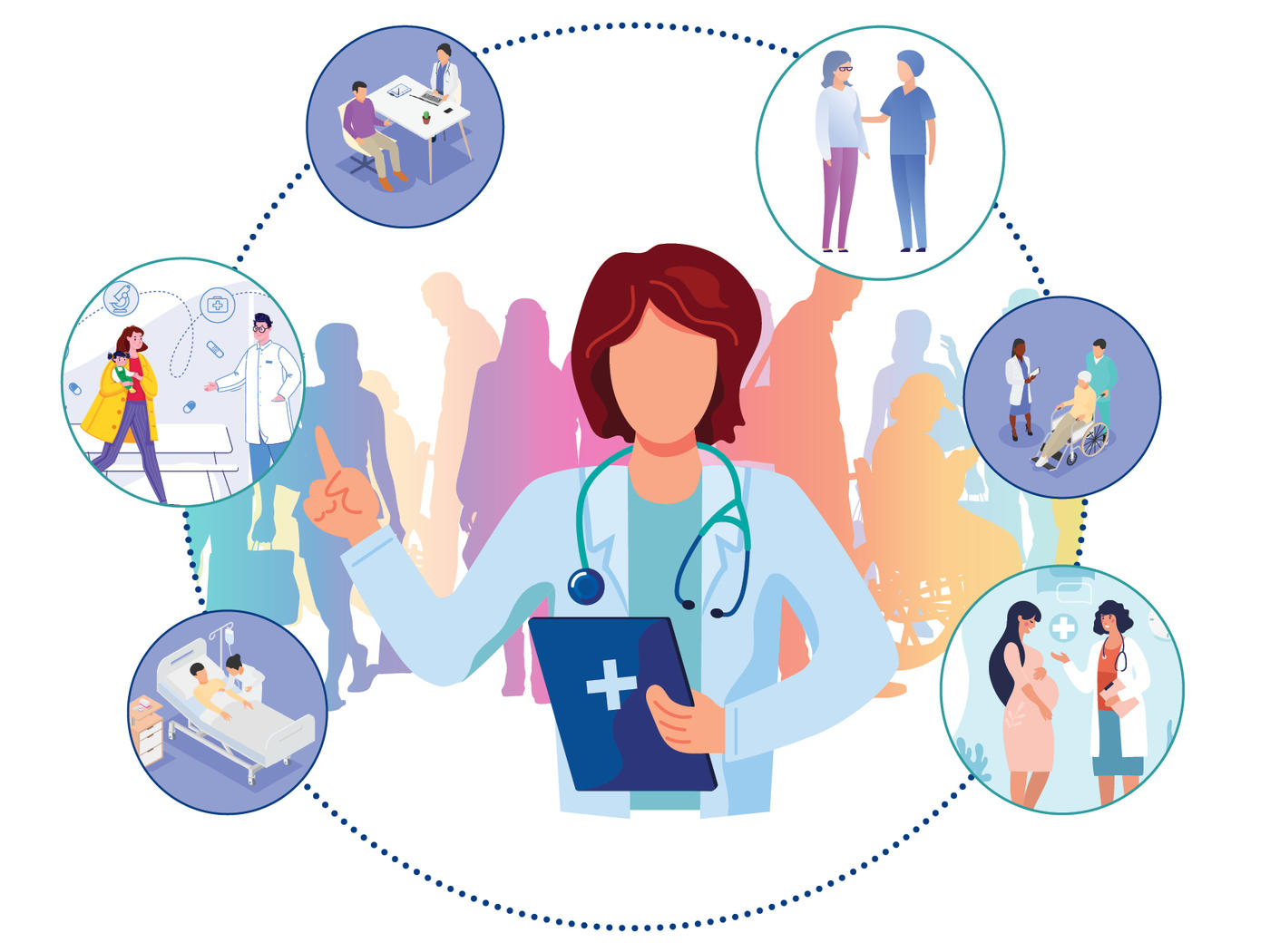Featured
Tags
Share
- Home / Blog / Nursing Today / Why Black Women are More at Risk for Human Trafficking – and What Nurses Can Do to Help
Why Black Women are More at Risk for Human Trafficking – and What Nurses Can Do to Help

Media and movies surrounding human trafficking strike fear, and often conjure up visions of missing children and elaborate recovery operations. But how close are these portrayals to reality in the United States?
In a recent webinar hosted by Dante Williams, Workforce Solutions Regional Manager for Chamberlain University, the important topic of human trafficking was discussed with a panel that included Nancy Yuill, Ph.D., former Chamberlain Campus President; Aisha Barnes, Senior Manager of Marketing at Chamberlain; and Kisha Roberts-Tabb, Ph.D., Human Trafficking, Gender Responsive, and LBGTQ Specialist at Cook County Juvenile Courts. You can watch the full video on Facebook: “Up for Sale: Combatting Human Trafficking.”
During this conversation, the experts discussed how human trafficking happens, who is most at risk, what to look for, and – most importantly – what healthcare professionals and the broader community can do to help.
Race and Trafficking
Many people think that “human trafficking” means a person has been forcefully taken across a border from one country to another. This better defines smuggling. The definition of human trafficking, on the other hand, is that it involves adults using coercion and force to get someone to agree to sex or labor.
African American girls are disproportionately at higher risk for human trafficking. Why is this? What makes this group particularly vulnerable to trafficking?
Dr. Roberts-Tabb points out that because of social inequalities present in America for many years, African Americans often find themselves in “…situations of poverty, of absentee fathers and incarcerated parents.” She points out that historically, black women were exploited as a sexual commodity, because they bore children and these children were forced into slavery.
Racism and oppression are embedded and perpetuated in human trafficking, “African Americans and people of color are more vulnerable. Black children account for over half of juvenile prostitution arrests, more than any other racial group. 62% of confirmed sex trafficking victims are African American. - Aisha Barnes
1
Dr. Kisha Roberts-Tabb agreed, mentioning the position black women are often put in as providers – if they can’t make rent, for instance.
“We are hit harder because our circumstances look a lot different,” she said. “We’ve been systematically put on the back burner of this land, so we always are in need.”
2
What Our Communities – and Nurses - Can Do to Combat Human Trafficking
When it comes to human trafficking, everyone needs to be more vigilant. Educate yourself. When you see something suspicious going on, get authorities involved.

You don’t have to know everything about trafficking, but do understand how you can help contribute to the solution. Start with your circle of friends and family. Provide information about trafficking to them. Tackle it a little bit at a time and build from there.
Within the black community, panelists also stressed the importance of modeling positive relationships in their own families and calling out bad behavior when they see it.
“The important thing that a black man can do in order to end this objectification of women is to display positive interactions with other black women,” said Dr. Roberts -Tabb. “We must model those relationships because it is negative relationships that get our girls and our boys involved in exploitation – involved with a person that does not have their best interests at heart.”
3
Barnes agrees. “If you see something that is objectifying to women and girls or not appropriate, or is contributing to this negative culture and objectification that we're talking about, then call it out,” she said.
4
For healthcare professionals, being knowledgeable and vigilant about trafficking are a great start. Here are some further suggestions:
- Advocate for Human Trafficking Policies
If your health care setting does not have policies and protocols in place to assist staff when they suspect a patient is a trafficking victim, then advocate to have those policies created. A good resource for this is a report published by the National Academies of Sciences, Engineering and Medicine entitled, “Confronting Commercial Sexual Exploitation and Sex Trafficking of Minors in the United States.”
- Get trained
Many trafficking victims are seen by healthcare professionals. Unfortunately, many of them are not identified at that time as trafficking victims. This is in part because there are not enough training programs for healthcare professionals to help them identify victims and get them the help they need. If your workplace doesn’t have training to help nurses identify victims and deal effectively with trafficking situations, speak up and see if this is something that can be created.
- Become culturally and linguistically competent
Nurses come into contact with trafficking victims in hospitals or clinics and when they do, it would be an advantage if the nurse had a better understanding of the patient’s culture and language so as to better communicate and build trust with the victim. In another post here on the Chamberlain blog (“Diversity and Inclusion – How Do They Relate to Healthcare?”) it was suggested that nurses receive training in Cultural and linguistic Competency. A free course is offered by the Office of Minority Health. You could even look into receiving certification as a Sexual Assault Nurse Examiner (SANE).
- Provide telehealth services
As the 2019 annual report from the United States Advisory Council on Human Trafficking pointed out, human trafficking often occurs in areas that are underserved by healthcare workers. If you work in underserved areas with little access to established trafficking programs and resources, consider providing services virtually if you aren’t already.
Dr. Yuill strongly encouraged anyone interested in this topic to watch a training video created by the Attorney General of Texas entitled, “Be The One.” You can watch this video below.
For more insights from the panel, including how traffickers groom their victims and common myths about human trafficking, you can watch the full video “Up for Sale: Combatting Human Trafficking.”
Victims can send a text to the Human Trafficking Hotline: 233733 and text the word “info” or “help”. You can also visit the National Human Trafficking Hotline to learn more or get help.
Related Articles from Chamberlain University:
Diversity and Inclusion – How Do They Relate to Healthcare?
The Impact of Violence Prevention
Sexual-Assault Victims Need to Visit the Emergency Room Despite COVID-19
Audio Transcript
1 “Racism and oppression are embedded and perpetuated in human trafficking, just related to the racial inequalities of people of color in general. As a nation we're grappling with that right now. And this is especially true when it comes to sexual exploitation. African Americans and people are color are more vulnerable. Black children account for over half of juvenile prostitution arrests, more than any other racial group. 62% of confirmed sex trafficking victims are African American. There's this history of sexual and physical abuse community or family instability, dislocation, child welfare involvement, foster care, life as a runaway or homeless youth disconnected from the educational system and more and more and more. So what's the saying, “If America catches a cold, black America catches pneumonia” right? So all of these factors are things that make them more vulnerable targets of trafficking.” - Aisha Barnes
2 We've always been providers. So when you think about a landlord asking for sex when you can't pay your rent, [he may say] “Here's an agency you may go to, but if you will do this for me, then I will allow a place for you and your children to be safe”. Now, no person in the United States should have to do that. When we think about choices, did we have a choice to do these things? How hard does that hit when you’re hungry? It looks a lot different when your basic needs cannot be met. We are hit harder because our circumstances look a lot different. We've been systematically put on the back burner of this land, so we always are in need. - Dr. Kisha Roberts-Tabb
3 “The important thing that a black man can do in order to end this objectification of women is to display positive interactions with other black women. We have to model the behavior we want to see. And until we start to model interacting with women, offering them a voice, and allowing them to understand that they are important. But we also have to model positive relationships in front of our children because in the black community, we don't often see positive relationships between men and women. And so we must model those relationships because it is those negative relationships that get our girls and our boys involved in exploitation – involved with a person that does not have their best interests at heart.” – Dr. Kisha Roberts-Tabb
4 “One thing that I would like to see from black males: calling out the behavior when you see it within your peer group that's negative. Within our culture, we'll be like, “Oh, I don't want to get involved with that. Or that's not my business”. But if you see something that is objectifying to women and girls or not appropriate, or is contributing to this negative culture and objectification that we're talking about, then call it out.” - Aisha Barnes
By Michael Britt
More from Nursing Today
Request More Information
To receive the Chamberlain University Program Guide, including associated career paths, please select a program of study.







